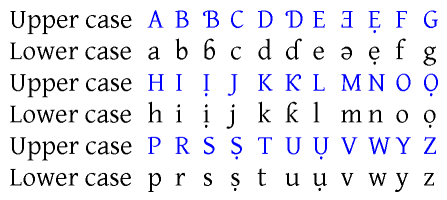OLPC Nigeria
| 2007 status: green | ||||
| green | ||||
| Federal Republic of Nigeria #NA | |
| Capital | Abuja |
|---|---|
| Official languages | English, Edo, Efik, Adamawa Fulfulde, Hausa, Idoma, Igbo, Central Kanuri, Yoruba |
| Area | 923,768 km² |
| Population | |
| - 2005 estimate | 128,765,768 |
| - 1999 census | 88,992,220 |
| - Density | 142/km² |
| Education | |
| - Literacy (%) | 68.0 |
| - Compulsory Years | #NA |
| - Compulsory Age | #NA |
| - Pop. in School Age | ~#NA |
| - Pop. in School | ~#NA |
| GDP (PPP) 2005 est. | USD 175 billion |
| - Per capita | USD 1,400 |
| GDP (nominal) 2005 est. | USD 77 billion |
| - Per capita | USD 598 |
| HDI (2006) | 0.448 (low) |
| Gini Index (1996-7) | 50.6 |
| Time zone | WAT (UTC+1) |
| Internet TLD | .ng |
| Calling code | +234 |
| More statistics... | |
Pilot
Sokoto Implements "One Laptop Per Child" Programme
From Mohammed Aminu in Sokoto, 10.28.2008
Sokoto State Ministry of Education is set to partner with the state's Ministry of Information and Communication Technology to implement the 'One Laptop per Nigerian Child' (OLPC) programme, to improve education delivery in the state.
Languages needed for localization
Nigeria's official language is English along with Edo, Efik, Adamawa Fulfulde, Hausa, Idoma, Igbo, Central Kanuri and Yoruba, but there are more than 250 languages spoken in the country, Ethnologue even lists 510 spoken languages.
Most children learn English, compulsory from primary school onward, and Arabic. They would probably have a better learning experience when taught most topics in their native language. Secondary school is almost exclusively taught in English. Yoruba is the local language most used in schools in the south west from primary to Secondary school , but the language of instruction still remains English. English is important to many Nigerians, seeing as at least a minimal knowledge of the language is necessary.
There are already localization efforts in Nigeria's major languages, Yoruba, Igbo and Hausa. These languages use the African Reference Alphabet, which is covered by Unicode but requiring support for composed characters with diacritics (at both input and display level). More information about localization can be found at the PanAfrLoc Wiki. According to L'aménagement linguistique dans le monde, a third of the children between 12 and 17 attend school.
This is what the Pan-Nigerian font looks like:

It's a variant of the Latin alphabet with diacritic characters and a few extended characters as well.
For more info you can refer to Wikipedia Pan-Nigerian_Alphabet page.
See also
- Plugging Africa's kids in to $100 laptop
- http://www.africanews.com/site/list_messages/10644 15 August 2007
Fantsuam Foundation is pioneering the localization five minority languages: Tyap, Gorok, Jju, Koro and Fantsuam www.zittsourceforge.org, http://zitt.sf.net/zpage.html